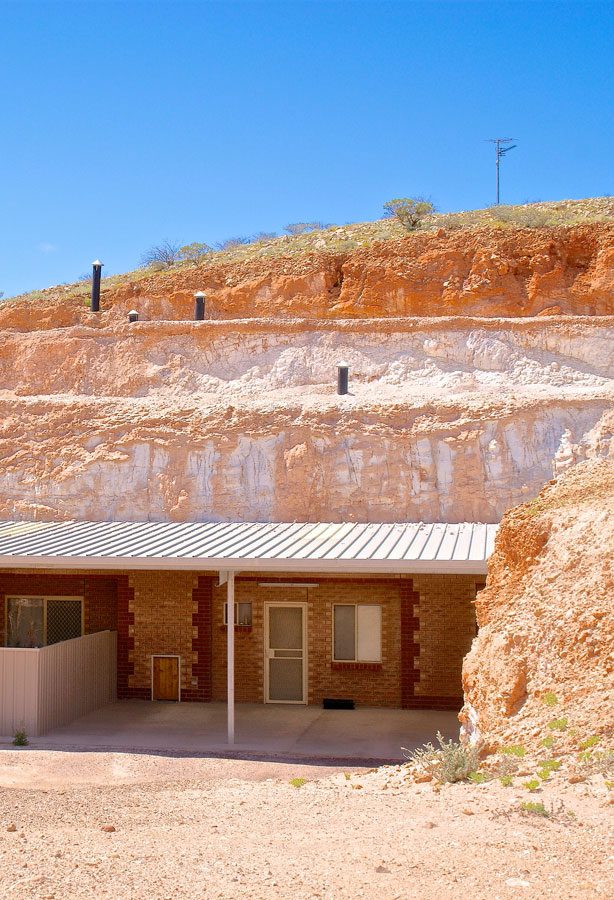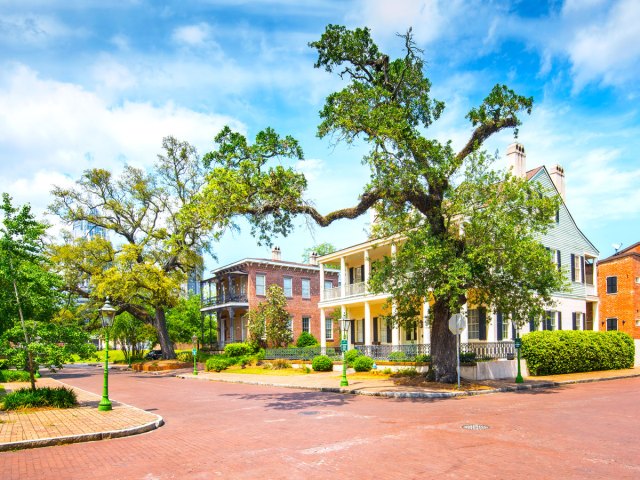Australia might be known for the coastal charm of its major cities and small surf towns, but Coober Pedy decidedly bucks that trend. At first glance, this town — nestled in the sun-scorched expanse of the South Australian Outback — isn’t even entirely visible, giving new meaning to the term “hidden gem.” That’s because in Coober Pedy, the houses are built underground, carved into the soft sandstone that seems to stretch as far as the dry desert landscape. Below, explore the fascinating history behind this subterranean marvel that showcases Australia’s diversity beyond its most popular tourist destinations.
A Gem of a Town
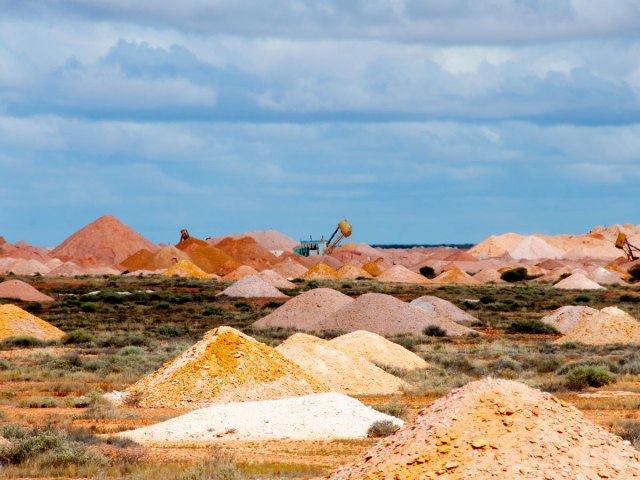
The first thing you’ll notice about Coober Pedy is its striking geographic isolation. Located in the middle of the South Australian desert, the town is about 500 miles from the next nearest major city center, with Alice Springs to the north and Adelaide to the south.
Aboriginal peoples inhabited this land for thousands of years before Scottish explorer John McDouall Stuart arrived in 1858. The town’s modern history, however, only traces back to the early 20th century, when opal was discovered on the site. A 14-year-old named Will Hutchison stumbled upon the precious gemstones in 1915 while accompanying his father on an unsuccessful gold prospecting trip through the harsh Outback landscape.
According to local history, some of the earliest people to move to the burgeoning community were soldiers returning from the trenches of World War I, bringing with them their knowledge of surviving in underground dugouts. Five years after the first opal discovery, a few hundred miners had moved in. By 1920, the town was officially named Coober Pedy, an Aboriginal term loosely meaning “white man in a hole.”
Underground Relief
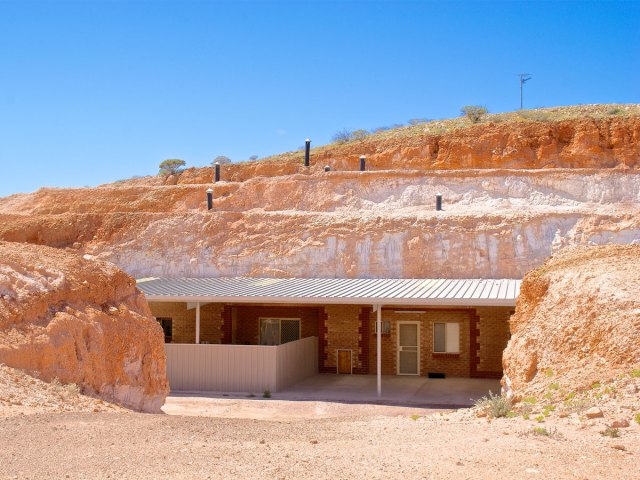
It isn’t just opal mines that set Coober Pedy apart. The arid landscape is rocky and treeless, and its climate is unforgiving. On a summer day, temperatures can regularly soar to almost 130 degrees Fahrenheit — so hot that locals have claimed to see birds falling from the sky. Miners quickly adapted to the harsh conditions, seeking relief by excavating homes, churches, taverns, and even hair salons into the area’s soft sandstone hillsides. In the early days, this was done with little more than picks and shovels.
Underground, the temperatures are comfortable through the brutal summers and the cold winters, ranging from 66 to 77 degrees day and night throughout the year. The town estimates that about 50% of its 2,500-person population currently lives underground. The homes range from modest to mansion-esque in size, multigenerational in familial makeup and span more than 4,000 square feet underground. The rooms and corridors are often rounded at the ceiling instead of squared off, but otherwise have all the same comforts of a “normal” house: a kitchen, bedrooms, bathrooms.
Luckily, underground moisture isn’t a problem due to Australia’s status as the driest inhabited continent on Earth. Ventilation systems are simple for the dugouts, often consisting of just one oxygen shaft. The tops of these vents poke up out of the surface of the earth everywhere around Coober Pedy, and are sometimes the first sign of a dwelling underfoot.
The Opal Capital of the World
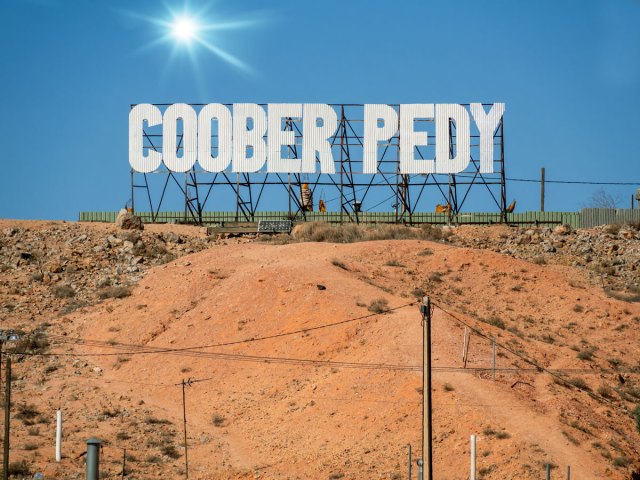
Millions of years ago, this region was underwater. As the water receded, silica, a common mineral, descended with the lowering water tables and was deposited throughout the earth’s faults and fractures. In the time since, the silica solidified into mesmerizingly colorful opals, one of the rarest gemstones in the world due to the uncommon natural processes that create it.
Coober Pedy’s opal mining industry has been a cornerstone of its economy, attracting miners from around the globe in pursuit of the iridescent gemstones and the lifestyle that mining success can provide. Mining numbers fluctuate, like every natural-resource rich area that experiences cycles of boom and bust. Today, Coober Pedy has about 100 active miners, and says it produces 85% of the world’s supply of opals, together with nearby Andamooka and Mintabie.
Ongoing Adaptability

Living in such an arid, unforgiving environment necessitates innovative solutions — a task that, fortunately, the residents of Coober Pedy have met. Recently implemented sustainable practices include a new renewable energy plant in town. Water, however, remains a finite resource — challenges facing residents include the lack of a large natural reservoir, minimal rainfall to supplement it, and aging infrastructure. But Coober Pedy is also establishing itself as a major regional service center for the South Australian Outback, offering essential medical, educational, and leisure services in the area — and reasserting its history as a tiny town that can take care of itself.
How to Visit This Tucked-Away Town
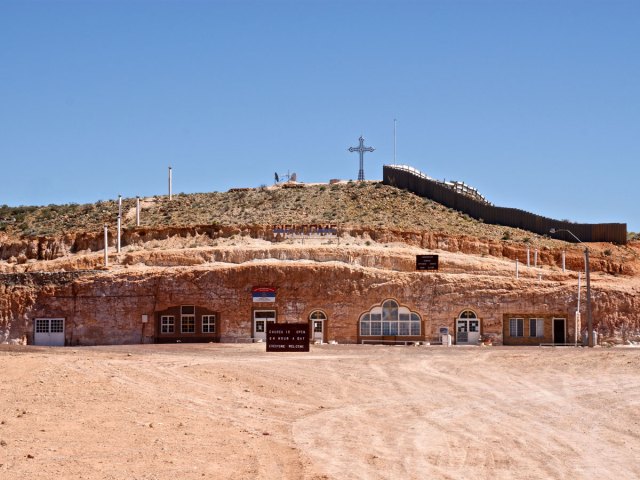
Travel options to Coober Pedy are, unsurprisingly, not as plentiful as Australia’s major cities, but with advance planning and a little patience, a trip to Australia’s final frontier is definitely possible — and will certainly be memorable.
There is indeed an airport in Coober Pedy, and regional airline Rex flies direct to and from Adelaide on certain days of the week. Charter flights are also available. Traveling to Coober Pedy by bus is another option, with daily trips from both Adelaide (about 11 hours) and Alice Springs (about eight hours). The scenic Ghan train has a Coober Pedy stop, but it’s about 25 miles outside of the town proper, and transportation the rest of the way must be arranged individually. There are no taxi services nor shuttle buses available in town, so renting a car is your best option when traveling to Coober Pedy.
Given the Outback’s desert climate, make sure you check the seasonal forecast and plan accordingly. January and February are the hottest months, while July tends to be the coldest month, with temperatures dropping to the freezing mark. The temperatures are more regulated if you’re staying in one of the town’s underground hotels, such as the Comfort Inn Coober Pedy. If you decide to experience Outback camping or one of the town’s charming caravan sites, take weather into account.
Coober Pedy offers several interesting tourist sites throughout the town. Faye’s Historic Underground Home museum offers an inside look at an authentic dugout home experience, and there are several opal mine tours and experiences — including the opportunity to dig for your own opal — that are definite must-sees. If you’ve rented a car, make sure to schedule in a 30-minute drive to the Kanku-Breakaways Conservation Park, where colorful sandstone hills light up the landscape (try to see it at sunset). And finally, the surreal Moon Plain expanse is sure to transport you to an otherworldly experience.
More from our network
Daily Passport is part of Optimism, which publishes content that uplifts, informs, and inspires.






